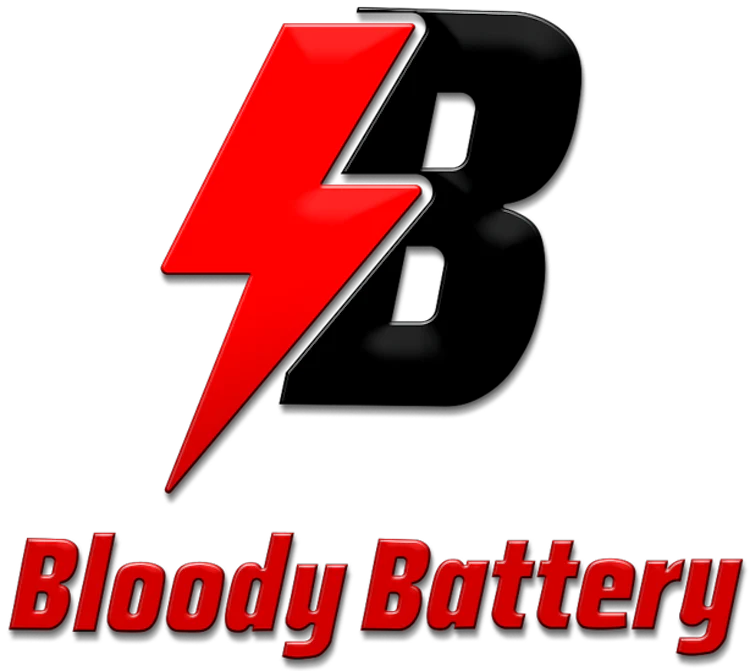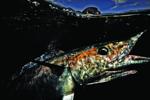
The Basics of Live Baiting for Wahoo
Share
Diver showing his catch after a long day of diving in the blue. - Luis Beristain
Effective live-baiting for wahoo has been alive and well in different areas such as South Florida and Bermuda for a very long time. Although targeting wahoo by live-baiting has been around for over 20 years in these areas, most competitive Florida wahoo fishermen have used the “Hi-Speed” trolling method for the last 10-15 years.
This chaotic method of pulling a lure at 20 miles per hour initially allowed us to find packs of wahoo by using the speed to cover a vast area. Another advantage is that the lure speed helps to eliminate a significant amount of “bycatch” such as barracudas, amberjacks and kingfish. It was and still is a very effective method of catching big wahoo. Some old timers used and still use the tried and true method of pulling large “Horse” ballyhoo skirted by their favorite colored lures. This is very effective also, but the key for catching wahoo has always been and remains location, location, location. Because of the heavy-duty type of tackle required by the high-speed method and others, it has built a multi-million-dollar industry to cater to those like me. We are called Wahoo Junkies and we are obsessed with the most effective ways to catch big wahoo. Let’s walk through the step- by-step advantages of live baiting and why it has become the most preferred method of catching trophy class wahoo.
WHY USE LIVE BAIT?
Simply put, there isn’t a better presentation than what a wahoo is already foraging upon. This is especially true when you see schools of bait being forced to the surface. In the early days of our introduction to High-Speed Trolling, we’d notice these schools of bait on the surface and run towards them. Often, it has been my experience that we’d get a hook-up 100-200 yards out from the school on our initial pass and then nothing. More often than not, we couldn’t pull a fish off of a school of bait on the surface without working that school for hours. I’ve often made the analogy that high-speed trolling was like trying to convince someone eating a Prime Ribeye to leave and chase a piece of fast-moving beef jerky...not impossible, just unlikely. Please note that this is not necessarily true for bait schools “balled up” deeper down in the water column. These submerged bait balls have proven to be very productive for high-speeders. The conventional wisdom is that a high-speed bite is a reactionary event, while a live- bait presentation is a natural stalking and feeding maneuver. Additionally, working a school of bait for hours defeats the entire premise of covering more ground by high speeding.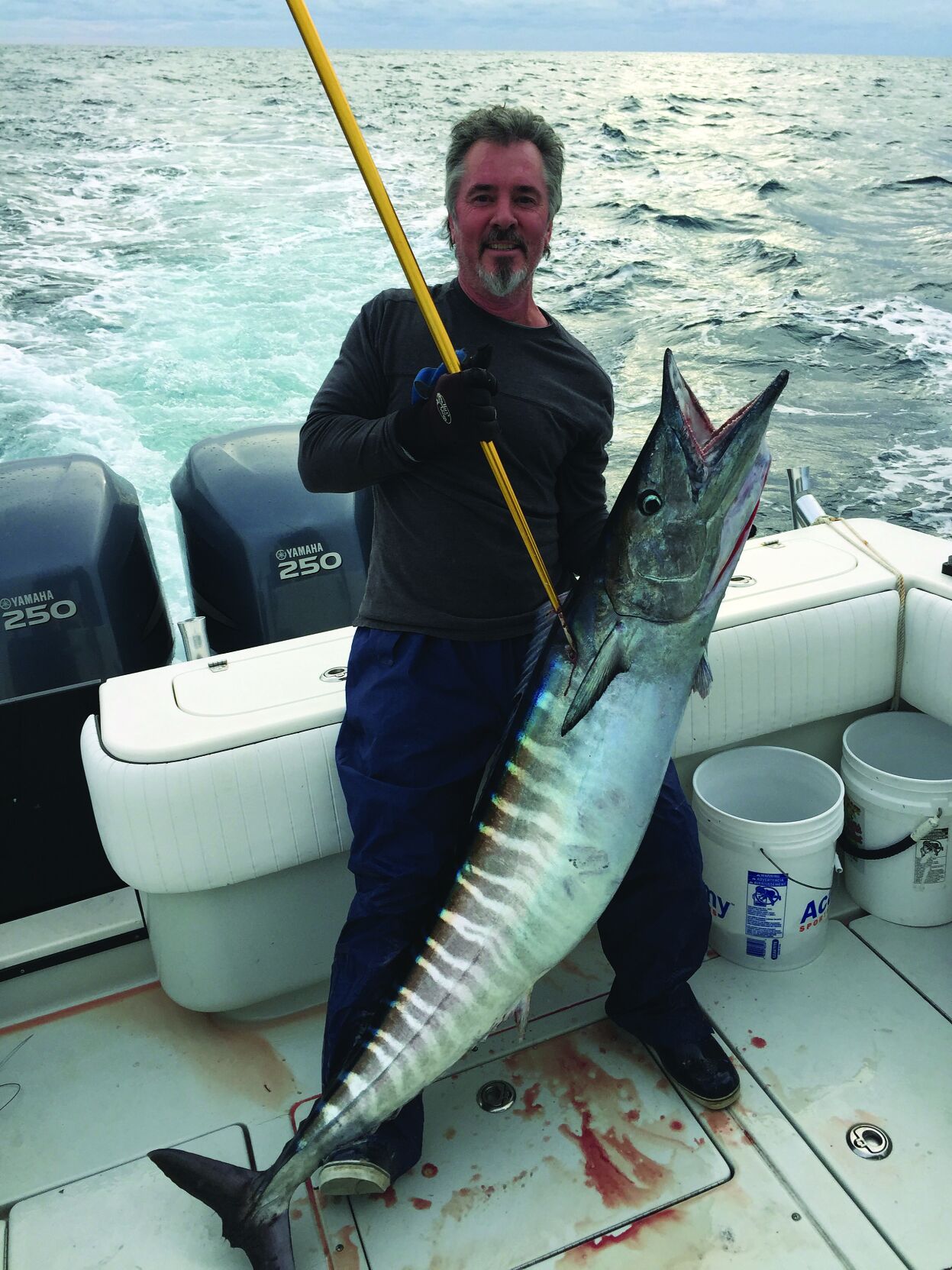
WHERE TO TROLL LIVE-BAIT?
Because you are slow-trolling to effectively live-bait, you need to be reasonably assured that wahoo are present. Several factors are considered, but none more than bait presence in the water column. Bait being forced to the surface is the easiest to identify because you can see it busting on top or by the presence of birds. Bait further down in the water column may be more challenging to find without a historical pattern of chasing wahoo. For those of us who have chased wahoo for decades, we have a record of success marked into our GPS units and logbooks.
For the newcomers, be nice to folks and build a network. Nothing replaces resident knowledge and a network. It’s simple: find the bait, and you will find wahoo. A fruitful, trustworthy network is a huge advantage. In summary, look for bait schools on the surface or down in the water column with depths of 90 feet or greater and a water temperature of 70+ degrees. The most productive spots are the ones you usually bottom fish but never pass up a good weed line and current rip (color change).
HOW DO I RIG FOR LIVE BAITING WAHOO?
Rigging for wahoo is pretty simple and straight forward. It is roughly the same method if you have ever live baited for King Mackerel before, but you need to beef up everything to survive a 100lb wahoo strike. My standard charter king mackerel setup is with 30lb wire with two #6 or #4 treble hooks, depending on bait size. For wahoo, I go with a minimum of 50lb wire (titanium because it’s reusable), a 4/0 live bait J hook for the nose of the bait, and a minimum of two #1 treble hooks for pinning to the bait’s body. There are several methods of rigging your treble hooks.
The traditional method is attaching a length of wire from the nose J hook to the first “mid- section” treble hook, then running another length of wire from the mid-section to the “tail-section” treble hook. That is a daisy- chain fashion rig that works well. I choose the South Florida method of running two different wire strands for each treble hook. Unlike the traditional “daisy-chain” rig, these “South Florida” rigs have two treble hooks with independent wire connections to the bait’s nose hook at different lengths. This lessens the risk of rig failure by a third and is worth the added cost of the extra wire. It also allows you to pin the treble hooks on either side of the bait’s body, exposing hooks for better effectiveness from a left-side or right- side strike.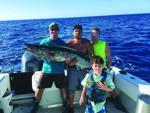
Remember, when pinning your hooks to the body of your chosen bait, that wahoo usually strike the middle of the bait, cutting it in half. So, strategically place those treble hooks to be the most effective. If you are like me and have difficulty picturing how to make these rigs based on my description, google “live bait rigging” for King Mackerel or Wahoo. The wire leader section from the nose hook to the swivel should be a minimum of 36”. The swivel that ties your wire rig to your fluorocarbon leader should be the smallest 60-80lb swivel you can buy. Your fluorocarbon leader between the wire live bait rig and the mainline should be 30-50ft. I use 30ft of 50lb test fluorocarbon. My mainline is 60lb test. You can use braid or mono, but mono is preferable due to its stretching capability, which can be very forgiving with bigger fish.
WHAT KIND OF LIVE BAIT DO I USE AND HOW DO I CATCH IT?
In Northeast Florida, where I charter and tournament fish out of, we look for small bonitas (“bullets”) and blue runners (“hard tails”). These will most likely be the bait schooling on the surface that you can see easily. These baits will mark further down in the water column on your sounder. We use spinning rods rigged with the larger Sabikis to catch blue runners. These larger Sabiki rigs will have six and sometimes eight hooks on them. Do Not use them out of the pack like this unless you want a complete mess. Cut these sabiki rigs in half and rig them only with three hooks.
A few bullet bonitas or blue runners will tangle a six-hook sabiki into a complete mess, and you’ll be unable to re-use it. Additionally, we use small diamond-style jigs on lighter tackle. We cast these jigs into the bait schools while we are slow trolling. We do this to keep refreshing our bait supply while fishing. It is very important to remember that bonitas will die quickly if put into a standard livewell. To store bullet bonitas effectively, a tuna tube configuration is required. Suppose you don’t desire to attach tuna tubes to your boat permanently. In that case, you can find live bait tuna tube buckets by Hooker Electric sold online, or you can do as I have done and have a custom-built livewell tuna tube modification built by Boattronics of North Florida. The good news is that the blue runners store is just fine in a standard livewell.
WHAT KIND OF LIVE BAIT SPREAD DO I RUN?
In tournaments I run three lines with my tournament crew of 5 people. On charters I run two lines with just a mate and I. All lines are on top, no downrigger bait. In Northeast Florida we have a real shark problem. 80% of the time, if you put a bait down, it will get eaten by a shark. My line lengths vary to the type bait that I use. If I’m using all bullet bonitas, the lines are at 10ft, 25ft & 40ft. My rule of thumb is that you must be able to see all of the bonitas from the transom of the boat.
Though not scientific, I believe that, except the Hammerhead Shark, those bigger sharks don’t like to be close enough to the boat to be seen. Wahoo on the other hand will eat right under the boat. They are not fazed by boat proximity. Using an all-blue runner spread, I run them further back at lengths of 30ft, 60ft, and as far back as you are comfort able with. Why the difference? I’m not sure, but maybe the blue runner can outmaneuver most big sharks. My favorite spread is bonitas at 20 & 40ft and a blue runner on the “way back” at about 150-200ft. I set our reel drags for the strike to about 5-7pounds.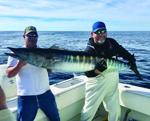
LANDING THE WAHOO.
If you are running the boat, proper boat handling is huge. Clearing lines and getting the boat turned to the fish quickly is the key to not getting strung out and beaten by the fish. Getting the angler to the bow on a center console in an orderly and controlled fashion will dramatically increase your chances of landing a trophy wahoo. If you’re on a Walkaround or a boat with limited access for an angler going to the bow, quarter the fish by turning into it. You cannot turn into or run down the fish so fast that the line gets slack because the angler cannot keep up. Find the tempo of the fight and keep it. When you get “up and down” over the fish, you need to increase the reel drag slowly and slightly to where you can start getting a line on the reel a little at a time.
Try not to be overconcerned with pulling the big #1 treble hooks too much; they remain hooked up and usually are pretty solid. The fish will circle and slowly come up if hooked, generally in or around the mouth. Get into the rhythm of the circle and have a gaff person ready. If the wahoo is as long as you are tall, have a 2nd gaff ready. Try to gaff the fish near the head. If you control the head, you control the body and, most importantly, the teeth. NEVER bring a fish over the side and into the boat towards yourself or anyone else! Just a graze of the wahoo’s teeth will severely damage a foot or a leg. Wear proper shoes! Barefoot or flip-flop wahoo fishing is just plain foolish. Be aware and be safe when boating a wahoo.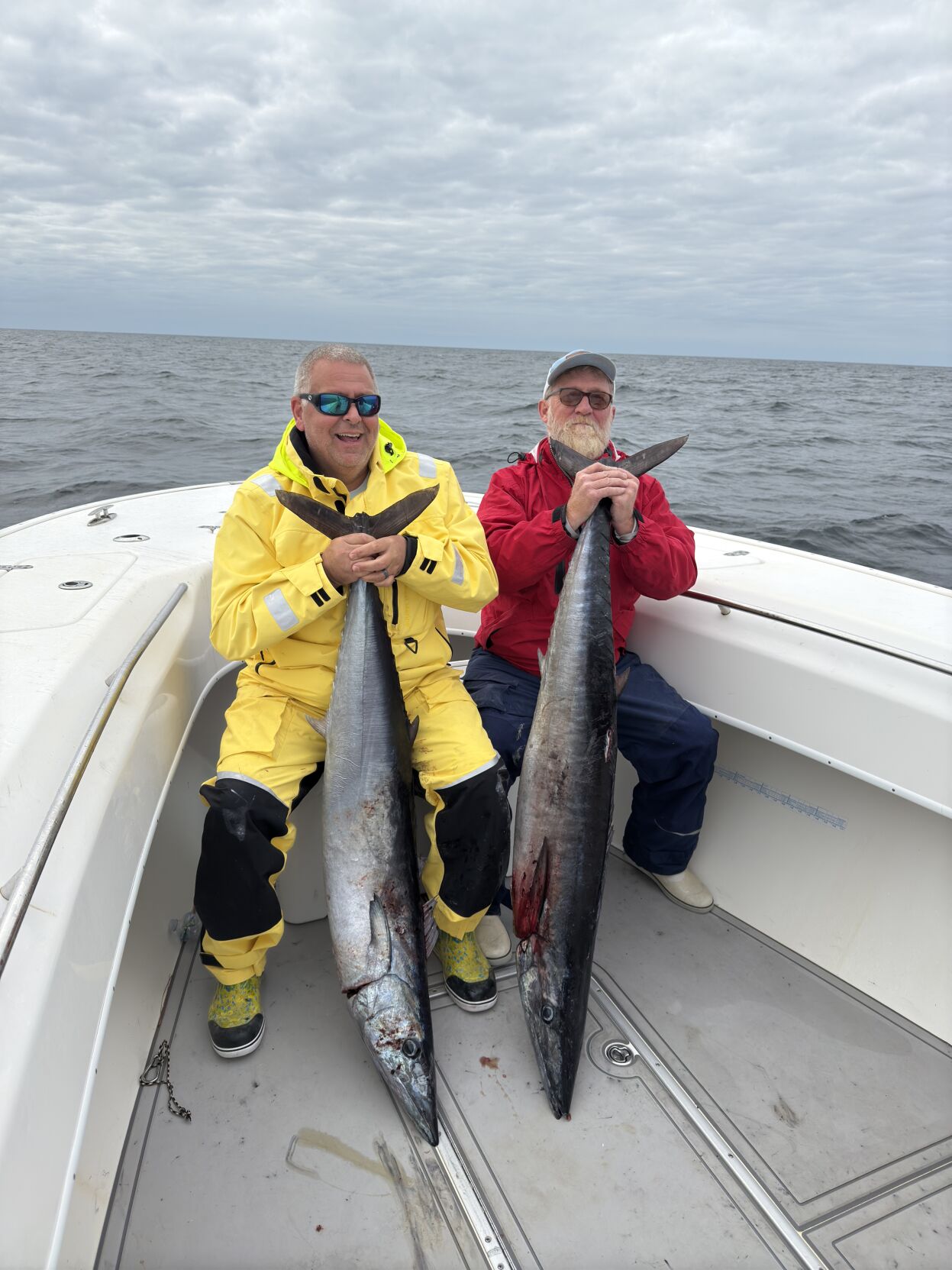
COST EFFICIENCY.
One of the biggest bonuses of live-baiting is that it’s just far less expensive than high-speed trolling. Because of the fuel burn inefficiency of your boat’s high-speed trolling profile versus the slow troll live-bait profile, the fuel burn will be about 60% (or less) of that of a normal high-speed trolling fishing day. In fuel alone, that is a minimum savings of 40%. The semi-recurring cost comparison of live bait rigging vs. high-speed setups is significant. A single high-speed setup can cost between $150-$220. This includes a lure, hookset, trolling weight and shock leader.
A single live bait rig may cost you up to $25 if you are using the high-end titanium wire. A normal budget live bait rig can be as low as $8, but a single wahoo bite will most likely destroy it and must be replaced. The reduced cost of scaling down the size of your rod & reel combo from high-speed trolling to live bait can also be significant. The standard minimum size of a high- speed trolling combo is 50 wide (e.g., Shimano Tiagra 50w) versus a higher-speed retrieve kingfish style reel (e.g., Shimano Speedmaster II 16), which is a difference of about $500. Let’s be clear: you can spend a ton of money getting the high- end billfish-style reel combos, and they do make a difference in tournaments, but it is not an absolute necessity.
Live-baiting for wahoo is a trendy rediscovery of old-school tactics. These old-school tactics blended with better tackle and the increased capability of modern electronics have made wahoo fishing easier and more inviting than ever before. What I love about live-baiting most is the visual, specifically for my customers. If you are paying attention you will notice the baits acting abnormally by running in crazy directions and jumping out of the water. This means they are being stalked. Those brief moments of expectation from when you notice the signs that a bite is getting ready happen and screaming drags is one the coolest moments in fishing.
If you haven’t done live baiting, you should absolutely give it a try. With the exception of making bigger rigs, you can use your king mackerel or sailfish reel combo setups to catch wahoo. It is inexpensive and can be done on rougher days and in smaller boats. Share your experiences on social media in our Facebook group “Wahoo Junkies”. I created this group several years ago to talk smack to my wahoo fishing buddies, and it has turned into something very special, with over 16,000 members worldwide. Find Wahoo Junkies on Facebook and ask to join. Share your wahoo fishing experiences and learn more about our passion for this great fishery.
Please remember when you take a kid fishing, great things happen.
Captain Tim Altman
Hoodoo Sportfishing Charters Amelia Island, Florida
